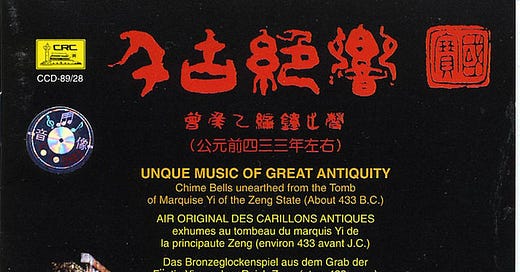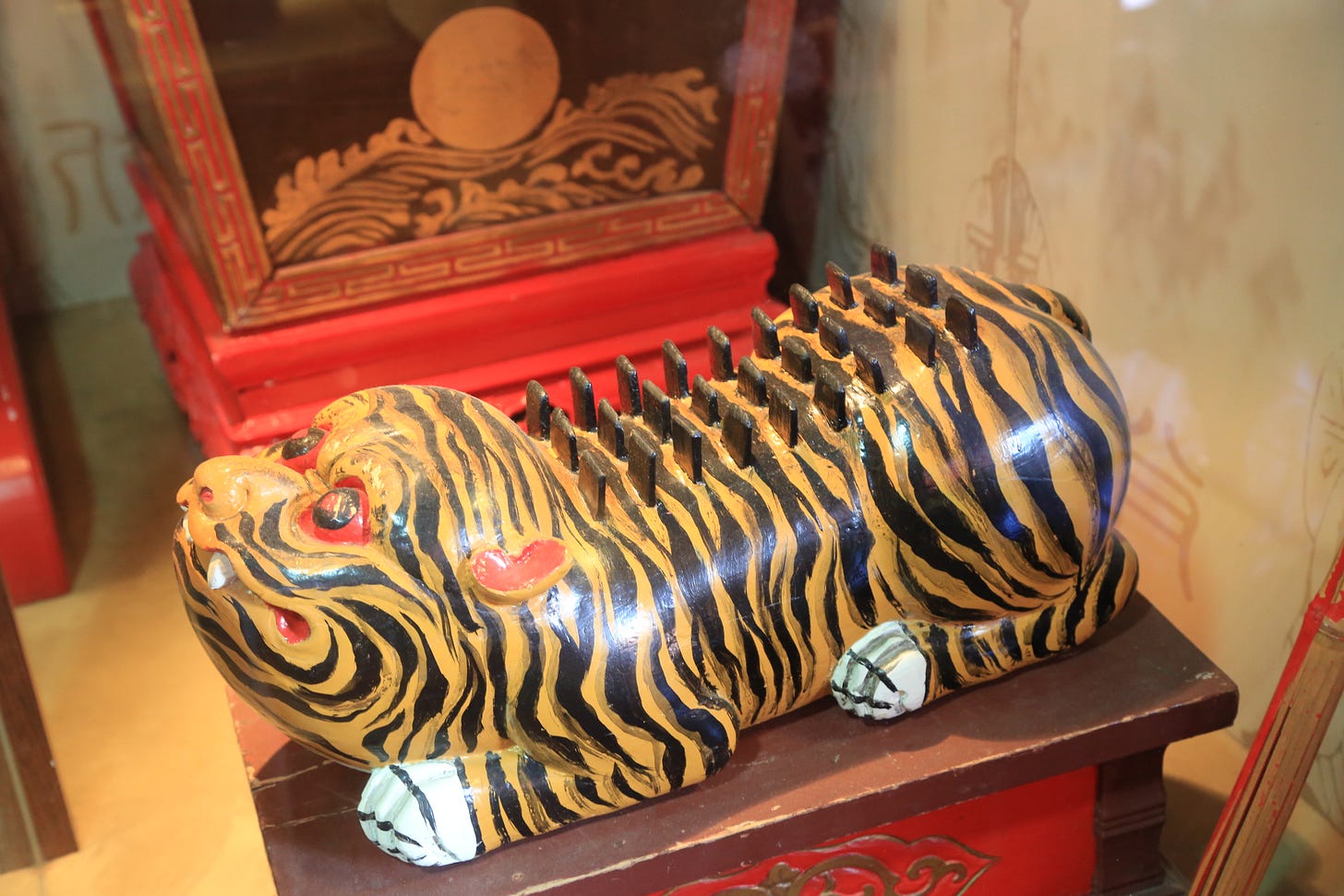Genre of the Day - Yayue
Album of the Day - 千古绝响·曾侯乙编钟之声 (Unique Music of Great Antiquity)
by (湖北编钟乐团) Hubei Chime Bells Orchestra (1989)
Chinese historical displays are unabashedly maximalist. With mountains of archaeological evidence of one of the most prolific early civilizations, what country wouldn’t take that path? After being discovered in 1974, the Terracotta Army stands 2,000 strong, each figure unique, at the burial of China’s first emperor. How many bucket lists does walking any of the Great Wall’s 13,171 miles appear on? Though the relics of its musical history may be less commonly renowned, they are equally potent testaments to ancient China’s cultural grandeur.
Yayue translates to elegant music, and in my musical fantasy world, it would catch on during this trend cycle of demure mindfulness. Elegance and poise was demanded of the form, which was written into ancient customs as a manifestation of aristocratic power. I was not expecting for Confucius to pop up in this column—I didn’t really take him for a music guy—but Plato got a mention for his criticisms of Greek music’s supposed corruption, so it’s only fair. Confucius also surveyed the music of his country and decided that yayue’s sophistication and representation of optimal governance triumphed over other musical forms’ gaudy decadence. As a division of business and culture, music is not quite connected to governance today as it was in ancient times, so it’s fascinating to ponder how sound could evoke such meaning. Its place in Confucian and governmental ceremonies was thus established, and it remains part of Confucian displays to this day.
Yayue used the most refined instruments of the time in all the materials of finery to convey those lofty ambitions, namely the guqin zither, the dizi flute, a mouth organ known as the sheng, the massive 25-stringed ze zither, the gu drum, a tiger-shaped instrument known as the yù! and a variety of bells. As the guidepost for its neighbors for so many centuries whether they liked it or not, China’s impact was as tangible in musical phenomena as political and cultural developments in other East Asian court cultures. Korean aak music, which beat yayue to the punch on this column earlier this year, and Japanese gagaku both heavily incorporated yayue’s solemnness.
Though I can’t speak to how it made me feel about political behavior, today’s album by a chime orchestra using bells unearthed from 433 BC fulfills yayue’s promise of refined beauty. The tintinnabulation (how often do you get to use a word as incredible as tintinnabulation) of “Bamboo Love Song” produces truly spellbinding harmonics. Like the vast blooms of the eponymous season, the glissando strums of the zithers, majestic drums, and upwards sway of the bells color “Spring River and Flowers in the Moonlight” with an eternal beauty. The funerary majesty of “For Those Fallen for their Country” glorifies those departed with grace and gravity. Besides Confucius’ stamp of approval, the ensemble’s dedication to carrying on yayue’s thousands of years of musical meticulousness translates to my uncourtly ears as gorgeous.






Spectacular performance, Reid. You’ve provided a glimpse of this music from quite long ago. I have to remind myself that the performers of these works have the knowledge and skill to perform this ancient work.
I love guqin music.Thanks for sharing, Reid.